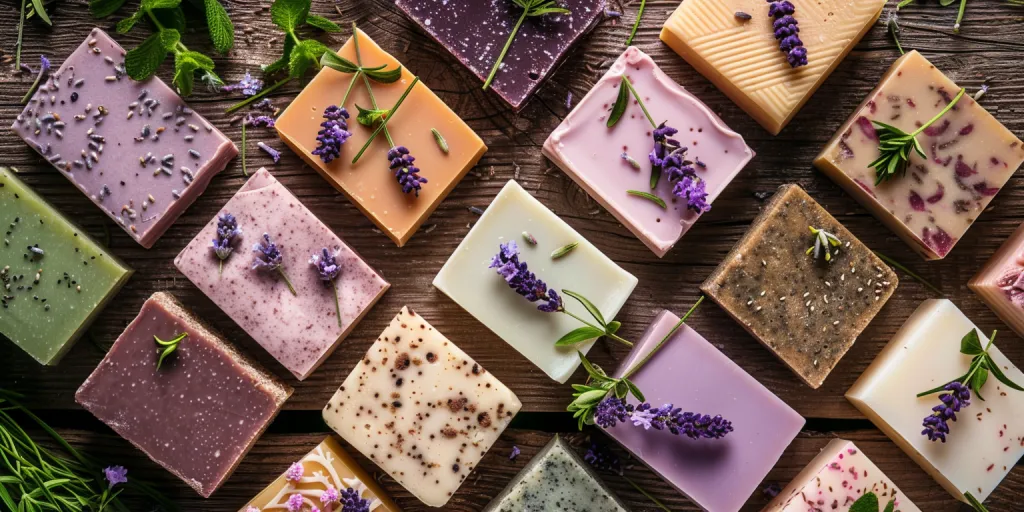In recent years, soap has transcended its traditional role as a mere cleansing agent to become a vital component of personal care routines. The rising awareness of hygiene, coupled with an increasing preference for natural and organic products, has significantly boosted the demand for soap. This surge in popularity is not just a fleeting trend but a reflection of evolving consumer preferences and market dynamics.
Table of Contents:
– Market Overview: Understanding the Current Landscape of Soap Products
– Natural Ingredients are Taking Center Stage in Soap Formulations
– The Shift Towards Organic and Plant-Based Ingredients
– Consumer Demand for Chemical-Free and Hypoallergenic Soaps
– The Role of Essential Oils in Enhancing Soap Appeal
– Innovative Soap Formats are Captivating Consumers
– The Surge in Popularity of Liquid and Foaming Soaps
– Solid Soap Bars Making a Comeback with Modern Twists
– Novelty Soaps: From Shapes to Scents, Creativity Knows No Bounds
– Customization and Personalization are Driving Soap Sales
– Personalized Soap Bars: A Unique Touch for Every Consumer
– DIY Soap Kits: Empowering Consumers to Create Their Own Products
– Subscription Services: Convenience and Customization Delivered Monthly
– Wrapping Up: Key Takeaways on Soap Trends in the Market
Market Overview: Understanding the Current Landscape of Soap Products
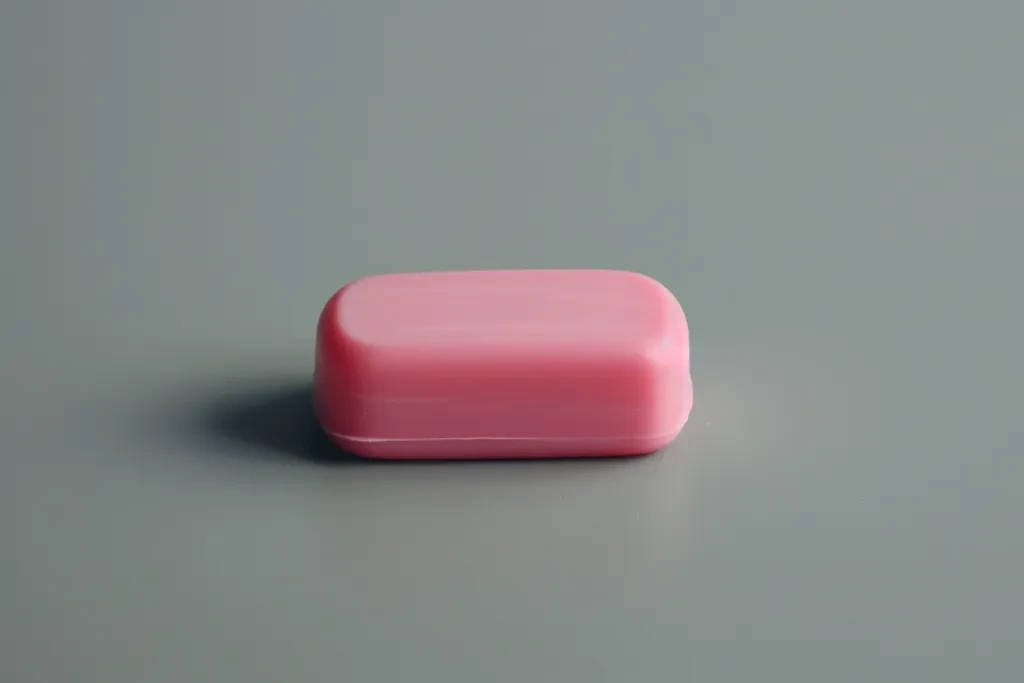
The Global Soap Market: A Snapshot
The global soap market has witnessed substantial growth over the past few years. According to a professional report, the market was valued at USD 24.5 billion in 2023 and is projected to reach USD 32.8 billion by 2028, growing at a CAGR of 5.8%. This growth is driven by increasing consumer awareness about hygiene and the rising demand for premium and organic soap products.
Key Players and Competitive Landscape
The soap market is highly competitive, with several key players dominating the landscape. Major companies such as Unilever, Procter & Gamble, and Colgate-Palmolive have a significant market share. These companies continuously innovate and diversify their product offerings to cater to the evolving consumer preferences. For instance, Unilever’s Dove brand has successfully positioned itself as a premium soap brand with a focus on moisturizing and skin care benefits.
Regional Insights and Market Segmentation
The soap market is segmented based on product type, form, and distribution channel. In terms of product type, bath soaps hold the largest market share, followed by kitchen and laundry soaps. The form segment includes solid and liquid soaps, with solid soaps dominating the market due to their eco-friendliness and longer usage lifespan. Distribution channels include supermarkets/hypermarkets, convenience stores, and online platforms, with online sales witnessing significant growth due to the convenience and variety they offer.
In terms of regional insights, the Asia-Pacific region holds the largest market share, driven by the high population density and increasing disposable income. North America and Europe follow, with a growing preference for organic and natural soap products. The Middle East and Africa region is also witnessing growth, particularly in the premium and luxury soap segments.
The soap market’s dynamic landscape is shaped by various factors, including consumer preferences, technological advancements, and regulatory frameworks. As the market continues to evolve, companies must stay attuned to these trends to maintain their competitive edge and meet the diverse needs of consumers.
Natural Ingredients are Taking Center Stage in Soap Formulations
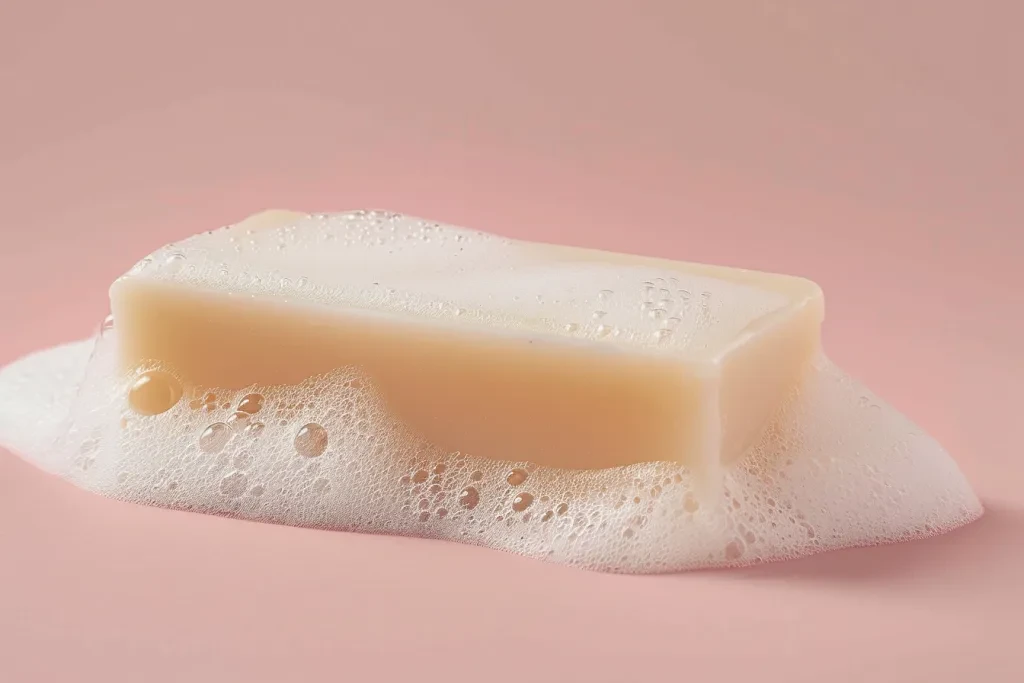
The Shift Towards Organic and Plant-Based Ingredients
In recent years, there has been a significant shift in the soap industry towards the use of organic and plant-based ingredients. This trend is driven by a growing consumer awareness of the environmental and health impacts of synthetic chemicals. Organic and plant-based ingredients are not only perceived as safer and more sustainable, but they also offer a range of benefits that synthetic ingredients cannot match. For instance, natural oils and butters, such as coconut oil, shea butter, and olive oil, are rich in vitamins and antioxidants that nourish and protect the skin. Additionally, plant-based ingredients are often biodegradable, reducing the environmental footprint of soap products.
Consumer Demand for Chemical-Free and Hypoallergenic Soaps
The demand for chemical-free and hypoallergenic soaps is on the rise, as consumers become more conscious of the potential irritants and allergens in conventional soap formulations. According to a professional report, a significant portion of the population is now seeking products that are free from parabens, sulfates, and artificial fragrances. This shift is particularly pronounced among individuals with sensitive skin or allergies, who are looking for gentle, non-irritating alternatives. Brands are responding to this demand by formulating soaps with minimal ingredients, focusing on natural and hypoallergenic components that are less likely to cause adverse reactions.
The Role of Essential Oils in Enhancing Soap Appeal
Essential oils play a crucial role in enhancing the appeal of natural soaps. These oils, extracted from plants, offer a range of therapeutic benefits and add natural fragrances to soap products. For example, lavender oil is known for its calming properties, while tea tree oil has antibacterial and antifungal effects. The use of essential oils not only improves the sensory experience of using soap but also aligns with the growing consumer preference for natural and holistic wellness products. Moreover, essential oils can be used to create unique and appealing scent combinations, allowing brands to differentiate their products in a competitive market.
Innovative Soap Formats are Captivating Consumers
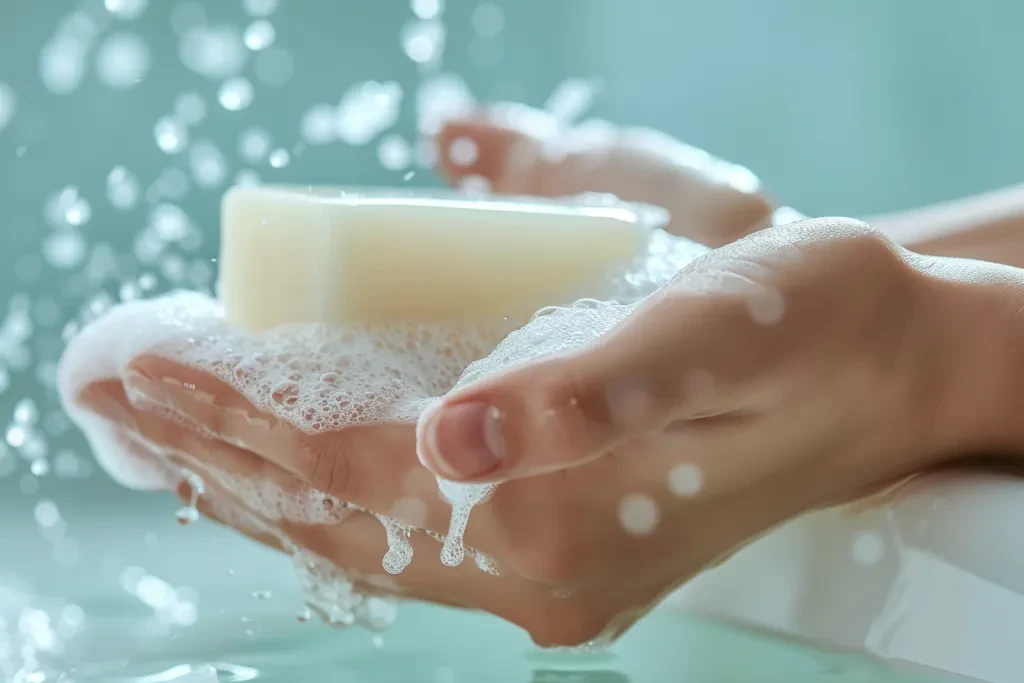
The Surge in Popularity of Liquid and Foaming Soaps
Liquid and foaming soaps have seen a surge in popularity, driven by their convenience and ease of use. These formats are particularly favored in public and commercial settings, where they offer a more hygienic alternative to bar soaps. Liquid soaps are often packaged in pump bottles, which reduce the risk of cross-contamination and are easier to use for individuals with limited mobility. Foaming soaps, on the other hand, provide a luxurious lather and are perceived as more economical, as they require less product per use. The growing preference for these formats is also influenced by the increasing availability of eco-friendly and refillable packaging options.
Solid Soap Bars Making a Comeback with Modern Twists
Despite the popularity of liquid and foaming soaps, solid soap bars are making a comeback, thanks to modern twists that appeal to contemporary consumers. Brands are reinventing the traditional soap bar with innovative shapes, textures, and formulations. For instance, some soap bars now feature exfoliating ingredients, such as oatmeal or coffee grounds, to provide additional skincare benefits. Others are designed with artistic patterns and vibrant colors, making them visually appealing and suitable for gifting. The resurgence of solid soap bars is also driven by the zero-waste movement, as they typically come with minimal or plastic-free packaging.
Novelty Soaps: From Shapes to Scents, Creativity Knows No Bounds
Novelty soaps are capturing the imagination of consumers with their creative shapes, scents, and themes. These soaps go beyond the traditional rectangular bar, taking on forms such as flowers, animals, and even food items. Novelty soaps are often infused with unique and exotic scents, such as tropical fruits or seasonal spices, adding an element of fun and surprise to the daily routine. This trend is particularly popular among younger consumers and those looking for unique gift ideas. The creativity in novelty soaps extends to their packaging as well, with many brands opting for eco-friendly and aesthetically pleasing designs that enhance the overall appeal.
Customization and Personalization are Driving Soap Sales
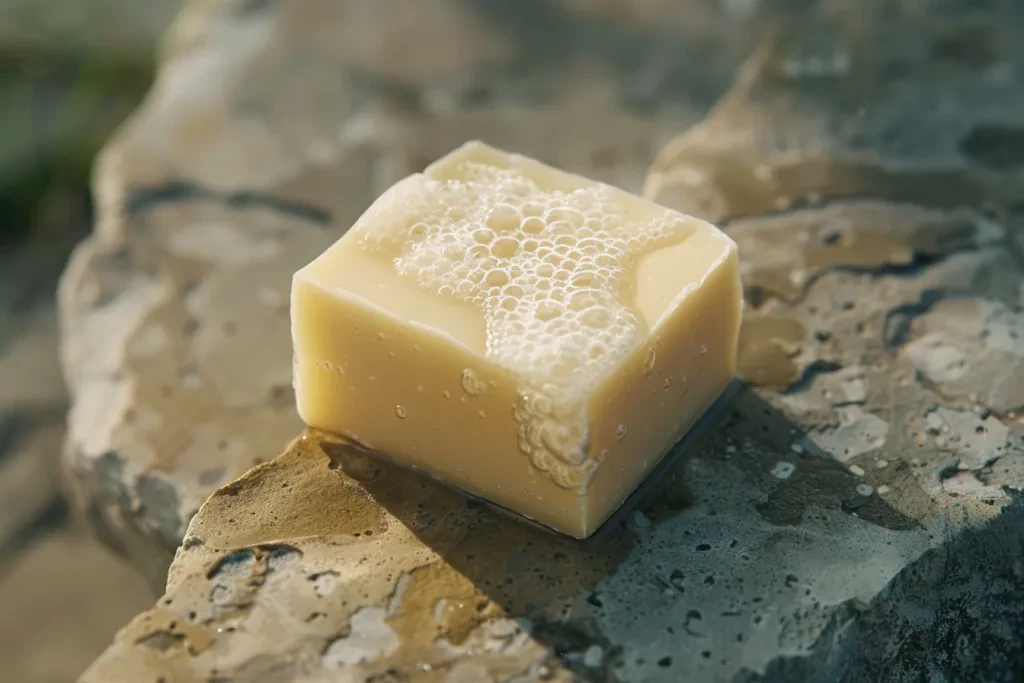
Personalized Soap Bars: A Unique Touch for Every Consumer
Personalization is becoming a key driver of soap sales, as consumers seek products that cater to their individual preferences and needs. Personalized soap bars allow consumers to choose their preferred scents, colors, and ingredients, creating a unique product tailored to their tastes. This trend is particularly popular for special occasions, such as weddings or corporate events, where personalized soaps can be used as customized favors or gifts. Brands are leveraging this trend by offering online customization tools and bespoke services, allowing consumers to create their own signature soap bars.
DIY Soap Kits: Empowering Consumers to Create Their Own Products
DIY soap kits are empowering consumers to take control of their skincare routines by creating their own soap products at home. These kits typically include all the necessary ingredients and tools, along with step-by-step instructions, making the soap-making process accessible and enjoyable. DIY soap kits appeal to a wide range of consumers, from hobbyists and crafters to those looking for a fun and educational activity to do with family or friends. The rise of DIY soap kits is also aligned with the broader trend of self-sufficiency and the desire for more hands-on, personalized experiences.
Subscription Services: Convenience and Customization Delivered Monthly
Subscription services are revolutionizing the way consumers purchase soap, offering convenience and customization delivered directly to their doorsteps. These services typically operate on a monthly basis, providing subscribers with a curated selection of soap products tailored to their preferences. Subscription boxes often feature exclusive or limited-edition soaps, along with other complementary skincare items, creating a sense of anticipation and excitement. This model not only ensures a steady supply of soap products but also allows consumers to discover new brands and formulations without the hassle of shopping. The convenience and personalization offered by subscription services are driving their popularity, particularly among busy professionals and skincare enthusiasts.
Wrapping Up: Key Takeaways on Soap Trends in the Market
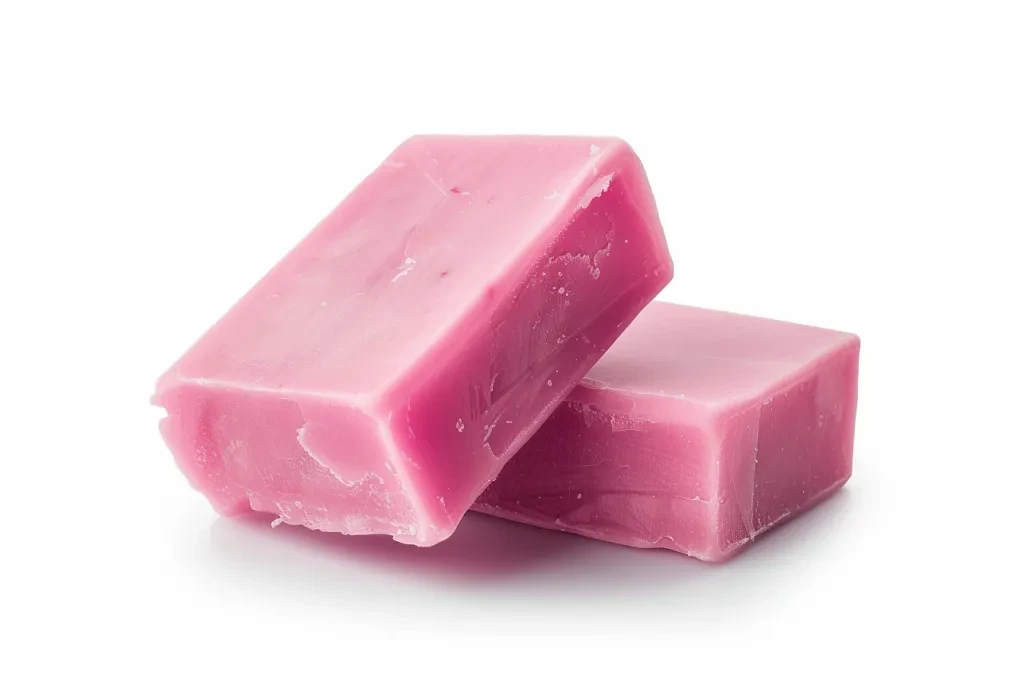
The soap market is evolving rapidly, driven by consumer demand for natural ingredients, innovative formats, and personalized experiences. The shift towards organic and plant-based ingredients reflects a growing awareness of environmental and health impacts, while the popularity of liquid, foaming, and novelty soaps highlights the importance of convenience and creativity. Customization and personalization are key trends, with personalized soap bars, DIY kits, and subscription services offering unique and tailored experiences. As the market continues to evolve, brands that embrace these trends and prioritize consumer preferences will be well-positioned for success.
